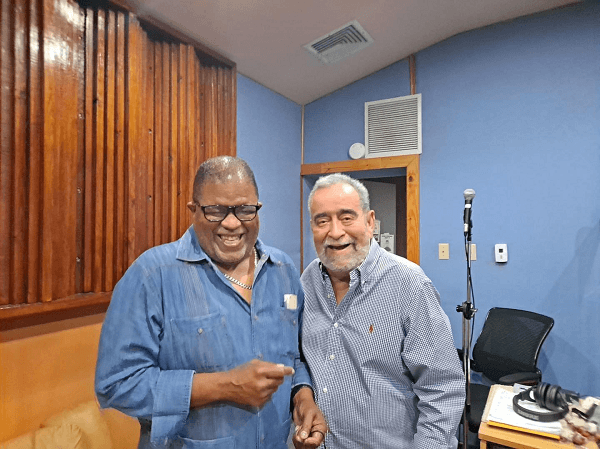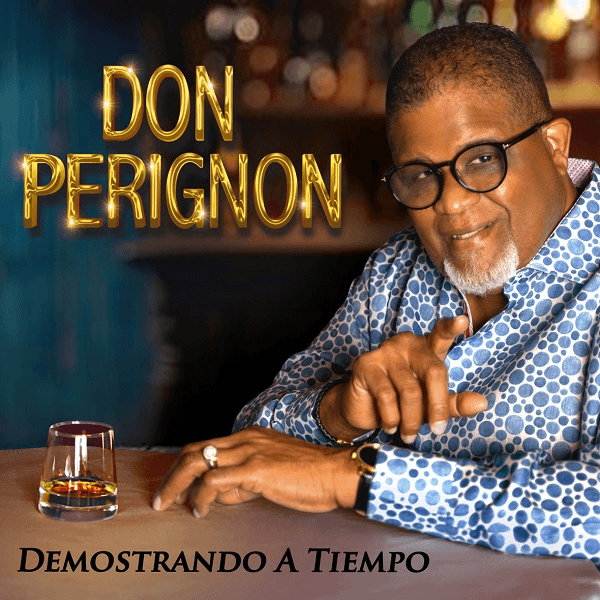There are many legendary orchestras in Puerto Rico that may not be widely known to many, but La Puertorriqueña is one of those names that cannot be excluded from the musical history of Puerto Rico and Latin America in general. Today, we were fortunate to interview Don Perignon, leader of the group, so that he could tell us about himself and the orchestra he founded.
Pedro Luis Morales Cortijos, better known as Don Perignon, is a bandleader and timbalero with whom we had the pleasure to talk about his musical background and the Orquesta La Puertorriqueña, which has given him the recognition he has nowadays. Then, these are the most important topics covered in the pleasant conversation we had with the veteran musician.

Why the nickname ”Don Perignon”?
When asked about why he is known as Don Perignon, he laughs and says that this is the most frequently asked question he has answered in the past three decades.
It all started because his familly called him ”Perin”. Then, one day, a musician from Andy Montañez orchestra in Miami asked him why he was called that, to which he replied that he has always been called ”Perin” in Puerto Rico. Later, the same gentleman arrived with a bottle of Dom Perignon (a well-known vintage champagne brand) and said that, for him, this young man was a grown man because of how he conducted himself, so from now on he was going to call him Don Perignon.
After that, Andy Montañez took it as a joke and began referring to the musician as Don Perignon, which other fellow musicians began to do, so it ended up being his official stage name.
How did Don Perignon fall in love with music?
Don Perignon told us that the first instruments he liked were the bongo and the conga, but that changed immediately as he knew the timbal, which he felt was more in line with the personality that he projected.
This curiosity for music led him and other teens his age to create an improvised group, while being at the school and studying at the Puerto Rico school of music. It was not a long time that he was in the institution, but it was enough to learn everything he would need in the future. In addition, the style he has nowadays when performing and leading an orchestra was acquired by watching Barry White, Ray Charles, Elvis Presley, among other celebrities of the day.

La Puertorriqueña
Something that Don Perignon wanted to clarify with regards to La Puertorriqueña is that the project did not start in 1975 as we thought, but that the group started with other names until 1987, which is when the artist and his colleagues finally decided to name it that way.
In the early 1970s, both Don Perignon and the rest of his colleagues, in his own words, were ”kids playing at being musicians” who were only interested in playing. However, over time, they started taking things a lot more seriously and decided it was time to pass the baton to someone, so they all took a vote and chose the young man as their bandleader because he was the tallest, had more physical presence and more character.
That responsibility he was given was a training-school for Don Perignon and acquired most of the knowledge he has today about music. Although the group eventually broke up, the artist is proud that his former orchestra fellows have achieved success and obtain prestige in the projects they undertook, which shows that those seeds they sowed at the time have borne fruit. According to him, ”they all achieved their dream thanks to discipline”.
Over time, other musicians joined the orchestra and also did their bit to make La Puertorriqueña what it is today.

Demostrando a Tiempo
Don Peringnon has said that one of the most important features of La Puertorriqueña is to always pay homage to the dancers and of course their latest album ”Demostrando a Tiempo” could not be the exception. Orchestras and Latin artists in general can interpret music in their own way, but a common denominator between all of them is that they will always include the characteristic spice of the dance and that is what we aim for in each of our productions,” said the musician.
It is for this that the artist says that ”Demostrando a Tiempo” is not very different from the rest of the work made by the orchestra, since they have always paid homage to dancers and they will never deviate from that path. What has changed is that the group experienced with much more romantic lyrics than ever and included them in special rhythms for dancers. This makes the production have the perfect fusion of rhythms for those who dance or simply listen.
Another important detail is that ”Demostrando a Tiempo” can also be defined as a mix between tradition and modernity. In this regard, the bandleader points out that, in the early days of salsa, most musicians were self-taught, until conservatories and music schools welcomed salsa, so musicians were better academically trained and new ways of performing and doing things in general emerged. Therefore, Don Perignon and his musicians, who are from the old guard, have had to adapt to the new times, but without leaving aside the essence with which they started their project.
Some of its main songs are a new version of the classic ”Soy Tu Ley”, ”A Quien Iré”, ”Sácala A Bailar”, ”Sin Rumbo”, among many others that La Puertorriqueña fans will find in this album.
After a few weeks of its release, critical reception to the album was very positive and Don Perignon trusts that the impact will be greater as days go by.
Read also: Career and interesting facts about Venezuelan singer and musician Omar Ledezma Jr.
- The Cajón throughout history - December 11, 2025
- Raúl Eliza: from the army barracks to the stage and recording studios - December 7, 2025
- La Nota Band showcases the best of Venezuelan talent - December 7, 2025